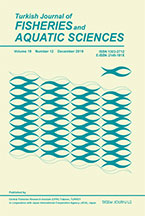Horticultural Studies (HortiS)
2015, Vol 32, Num, 2 (Pages: 211-224)
Resistance to root-knot nematodes (Meloidogyne spp.) in tomato: Mi gene and occurrence of virulent populations
Gökhan AYDINLI 1
1 Bozok Üniversitesi, Tarım ve Doğa Bilimleri Fakültesi, Bitki Koruma Bölümü, Yozgat
DOI :
10.16882/derim.2015.79466
Viewed :
2912
-
Downloaded :
1909
Root-knot nematodes (Meloidogyne spp.) are one of the most important agricultural pests that cause serious yield losses in tomato. Resistant tomato cultivars have commonly been used in both conventional and organic agriculture. In tomato, resistance to three most prevalent species of root-knot nematode, Meloidogyne arenaria, Meloidogyne incognita, Meloidogyne javanica, is controlled by the Mi-1 gene. However, there are two major limiting factors for efficiency of Mi-1 gene: High soil temperature and occurrence of resistance-breaking (virulent) populations. These populations can emerge either naturally or after repeated exposure on tomatoes with Mi-1 gene. This review summarizes information on some strategies to prevent the emergence of virulent populations and to preserve the durability of plant resistance to Mi-1 gene.
Keywords :
Mi gene, Resistance, Root-knot nematode, Tomato, Virulent














